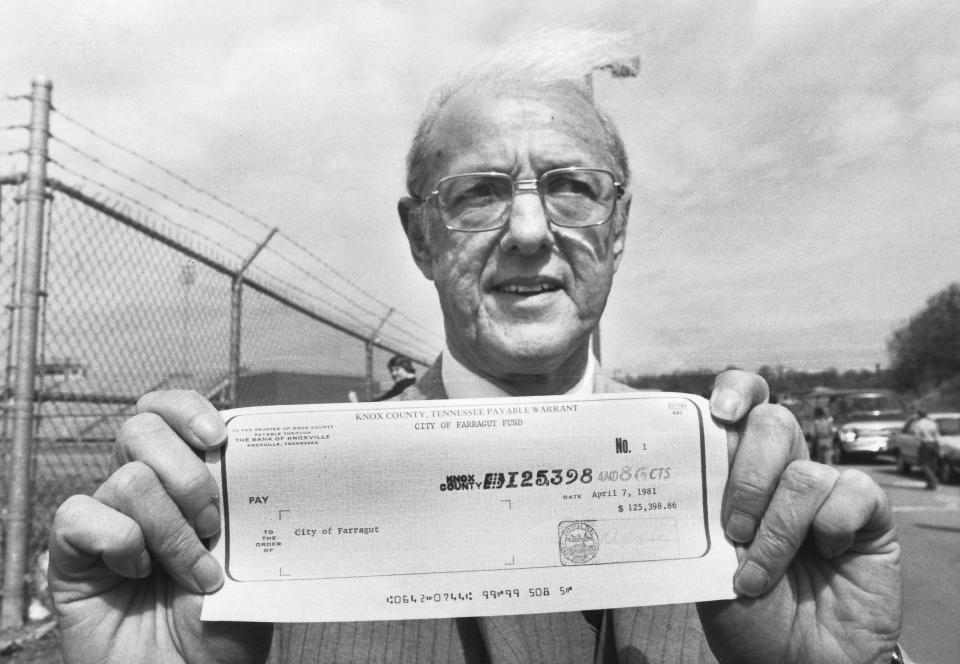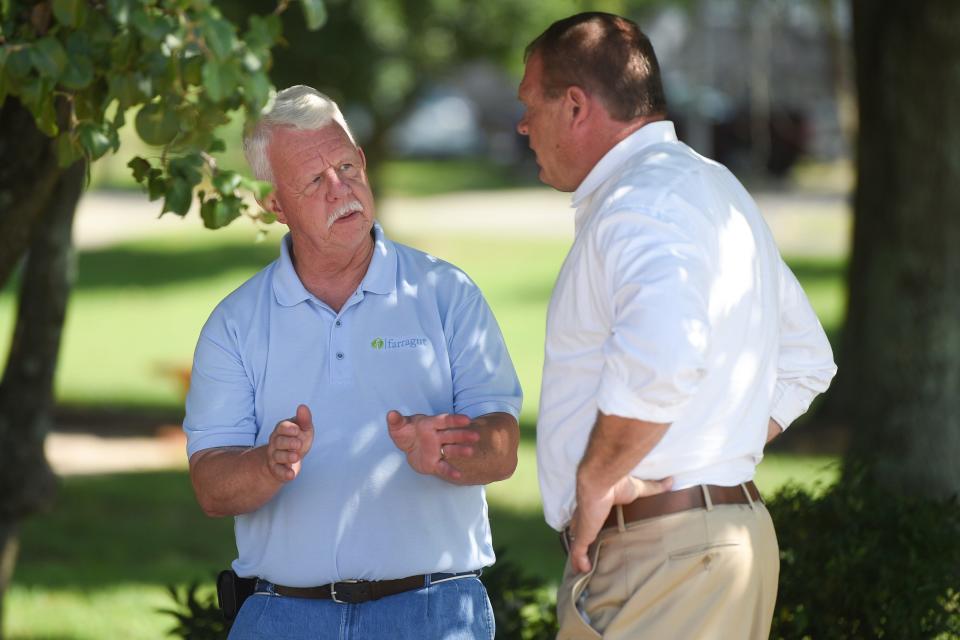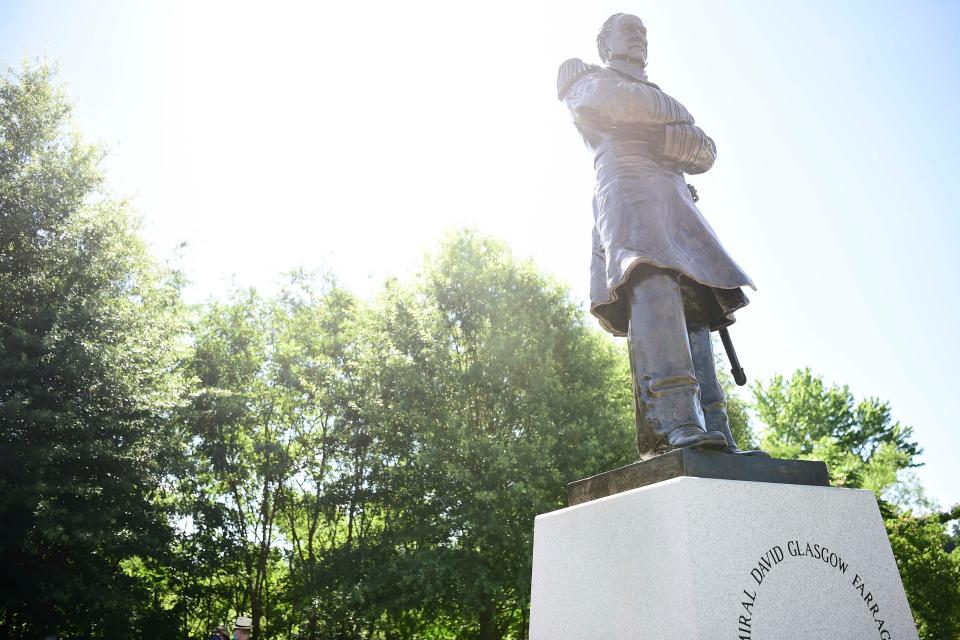How did Farragut fend off Knoxville annexation and become its own town? | Know Your Knox
As Knox County growth shows no signs of slowing, particularly in places like Halls and Powell, it’s worth taking a look at how another growing area scooted out from under county and city leadership and made its own way.
Where did Farragut come from?
For years during the 1970s-'80s, Knoxville had been finger-annexing parts of the county outside the city limits. That is, the city took slices of commercial corridors (both retail and the bars and restaurants that provided liquor tax), gathering up extra sales tax revenue without having to substantially expand city services, something now tightly regulated by state law.
Still, it was common at the time. So how did Farragut avoid annexation by Knoxville?
When West Knoxville was overlooked by development
This seems silly to suggest now, but in the late 1970s developers weren't clamoring to plant their flags in West Knoxville.
As Farragut Mayor Ron Williams tells it, leaders in West Knox County felt they were being overlooked by development in other places of the county. The county’s population wasn’t centered there – Concord Road had only a blinking stoplight, he said – and what development was occurring was haphazard.
In the late 1970s, a group of citizens went to Knoxville Mayor Randy Tyree looking for some attention and were rebuffed, Williams said. Shortly thereafter the community filed papers with the state to incorporate as a town, requiring a vote of residents.
Knoxville fought back against Farragut
However, in December 1979, a month before the incorporation vote, the Knoxville City Council voted to annex a quarter-square-mile strip on a right of way along Interstate 40.
Knox News archives explain why:
"Under state law, Farragut could not incorporate for 15 months if the area is within five miles of Knoxville. When Farragut residents filed their petition for referendum, the proposed limits of Farragut were more than five miles from Knoxville's city limits. The action of Knoxville's City Council, however, brought the city limits within five miles of the Farragut area."

Farragut held the incorporation vote anyway, and Knoxville contested it in court. And on it went.
Some eight years later Victor Ashe inherited the lawsuit when he was elected Knoxville mayor in 1988. He worked with Farragut Mayor Bob Leonard (with Knoxville City Council support) and the two came to an agreement that they would stay on their respective sides of Lovell Road.
“We dropped the lawsuit and they were home free,” Ashe told Knox News recently.
How does it work?
Independent towns like Farragut don’t get to keep all of their tax revenue. Like every municipality, Farragut is required to send money to the state and Knox County. But Farragut took a different approach. Unlike nearly every other municipality in the state, the town didn’t add a local property tax. (Knoxville residents, for instance, technically pay two property taxes, one to the city and one to the county.)

“We basically build our budget on sales tax that’s generated from the businesses in (ZIP code) 37934,” Williams said.
Farragut keeps 72% of the revenue, sharing the rest as required with the state and county.
That sales tax revenue includes dollars from the Turkey Creek retail area, which Knoxville and Farragut leaders agreed to split before it was developed.
Beyond that, Williams said, the town operates leanly. The town administrator gets paid, he said, but all other officials are volunteers, including him. They incorporate cost-share measures for developers who want to build there, and use that money to pay for roads.
They're able to do this, to an extent, since the town does not pay for police or fire service, which are provided by the Knox County Sheriff's Office and by residents choosing to opt into Rural Metro Fire coverage, respectively.

Know Your Knox answers your burning questions about life in Knoxville. Want your question answered? Email knowyourknox@knoxnews.com.
Tyler Whetstone is an investigative reporter focused on accountability journalism. Connect with Tyler by emailing him at tyler.whetstone@knoxnews.com. Follow him on Twitter @tyler_whetstone.
Support strong local journalism by subscribing at knoxnews.com/subscribe.
This article originally appeared on Knoxville News Sentinel: How Farragut become its own town next door to Knoxville

